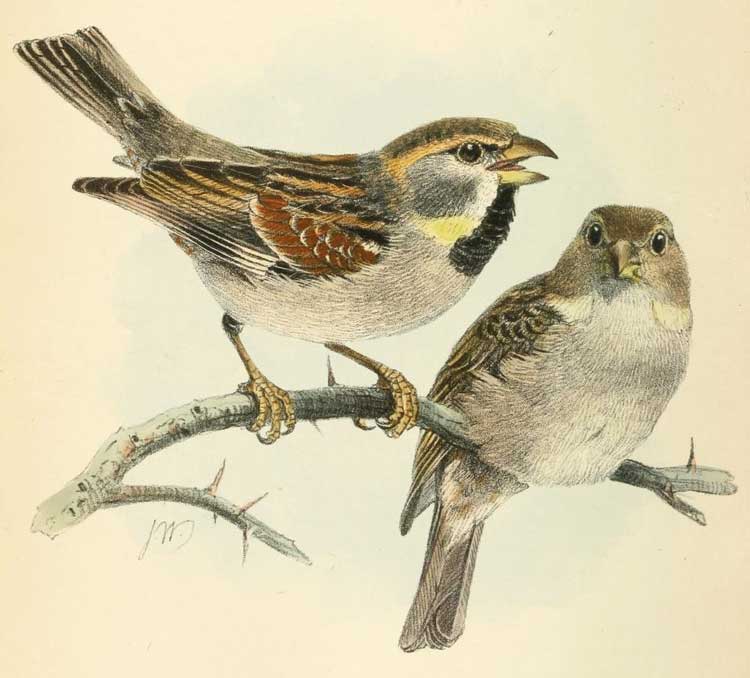Passer moabiticus Cladus: Eukaryota Name Passer moabiticus (Tristram, 1864) Vernacular names Ελληνικά: Μεσανατολικός Σπουργίτης Reference * Proceedings of the Scientific Meetings of the Zoological Society of London. Pt1 p.169 ------------ The Dead Sea Sparrow (Passer moabiticus), as its name suggests, is a breeding bird around the River Jordan, Dead Sea, and into Iraq, Iran and western Afghanistan. Breeding recorded in Cyprus (1981/1982) but is probably extinct there now. It is migratory or dispersive, although the regular wintering grounds of this nomadic species are largely unknown, except that the eastern race winters in Pakistan. Flocks of the nominate western race have been found in winter further south in the Middle East. It is a small 12–13 cm long sparrow which breeds in dry lowlands with some shrubs, including tamarisk, and access to water. It builds a nest in a tree, and 4-7 eggs are laid. The male Dead Sea Sparrow has a grey crown, rear neck and cheeks, and a small black bib. It has a pale supercilium shading to buff at the rear, and yellow neck sides. The upperparts are dark-streaked reddish brown, and the underparts are grey-white. The female is like a small House Sparrow, with a streaked brown back, greyish head and buff-white underparts. She is paler and smaller billed than her relative, and sometimes shows yellow on the neck sides. The eastern race P. m. yatii is sandier, and the male has a yellow wash to the underparts. This species feeds principally on seeds, like other sparrows. The chirping song resembles those of House and Spanish Sparrows, but is weaker. The flight call is a high-pitched chi-wit. This species is often silent. References 1. ^ BirdLife International (2009). "Passer moabiticus." 2009.2 IUCN Red List of Threatened Species. IUCN 2009.2. * Clement, Peter; Harris, Alan; Davis, John (1993). Finches and Sparrows: an Identification Guide. Princeton, New Jersey: Princeton University Press. ISBN 0-691-03424-9. Source: Wikispecies, Wikipedia: All text is available under the terms of the GNU Free Documentation License |
|

